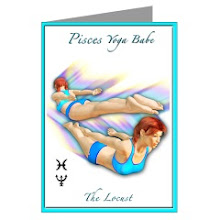
Women's fitness expert Brad Schoenfeld offers training tips for the new year.
Champaign, IL (PRWEB) January 2, 2008 -- As the new year approaches, women are inundated with new fitness trends that claim to be the solution to dropping pounds and sticking with new years' resolutions. But, according to Brad Schoenfeld, author of the popular, "Sculpting Her Body Perfect," (Human Kinetics, 2008) these fitness fads have created a multitude of training misconceptions.
"There is so much misinformation promulgated by so-called 'fitness experts' that it is difficult for women to separate fact from fiction. Ultimately, these myths can have a negative impact on their ability to achieve results," Schoenfeld says.
Schoenfeld dispels some of the most common fitness myths:
* Myth: Abdominal muscles should be trained every day for best results. Abdominal muscles are indirectly involved in virtually every exercise. They act as stabilizer muscles which help to support the spine and maintain balance during bouts of physical activity. Since the abdominals are being trained during every workout, daily abdominal training isn't necessary. In order to ensure adequate recuperation, abdominals should be trained no more than three times per week, allowing at least 48 hours of rest between training sessions.
* Myth: Abdominal training helps to flatten the stomach. To widdle down the midsection, abdominal training must be paired with aerobic exercise. Abdominal exercise helps to develop the muscles of the abdomen, while cardiovascular activity decreases fat surrounding the abdominal muscles -- aiding in the appearance of a flatter stomach.
* Myth: Low intensity aerobic activities are better for fat burning than high intensity exercise. There is a direct correlation between physical effort and caloric expenditure; the harder a person works, the more calories they expend. Accordingly, high-intensity exercise burns more fat calories on an absolute basis than lower intensity activities. Since the most important aspect of weight loss is the total amount of fat calories burned--not the percentage from fat--training should be performed at the highest intensity possible.
* Myth: The body cannot be overtrained from performing cardiovascular exercise. Although the body can tolerate a greater volume of aerobic exercise than anaerobic activity, too much of it eventually will set back fitness endeavors, and have a negative impact on the body. While recovery ability varies among individuals, the body needs rest and recuperation to regenerate its glycogen stores. Glycogen reserves are the body's primary energy source, providing the strength and endurance to perform everyday chores. Since cardio burns glycogen (as well as fat) during exercise performance, too much of it will deplete these reserves, ultimately causing overtraining.
* Myth: Women should train with light weights so they won't bulk up. To tone up, not bulk up, a high repetition scheme should be utilized. Performing high reps (15 to 20 per set), targets the endurance muscle fibers and tends to get a leaner, harder physique without adding substantial muscular mass. To acquire great muscle tone women must train to momentary failure, which requires using heavier weights. If the weight is too light, the muscle is not worked hard enough to adequately stimulate results.
My reaction:
i agree on the said myths lifting heavier weights will bulk up. That is not true, but i believe if your body type is mesomorphic, yes you will always have that kind of muscular, bulky looking, compared to mesomorphic individuals. So, thats why in that case, performing higher repetitions is a must, to have that leaner, toner results. To high intensity and low intensity, its always been a debate of the series of fitness experts, maybe its true the higher the intensity the more you will lose calories.But perhaps the point there is, high intensity if not taught, or done properly, it boils down to a higher risk of physical injuries.As a fitness instructor i almost do abdominal training everyday and yes it is paired with aerobic activities. It indeed made my abs look toned and in great shape but because sometimes i forget to control my food and maybe considering my age, yes it sometimes made my stomach bigger and flabby.
Wednesday, January 23, 2008
Beware of Common Exercise Myths
Posted by
raquel
at
10:35 PM
![]()
![]()
Subscribe to:
Post Comments (Atom)








No comments:
Post a Comment